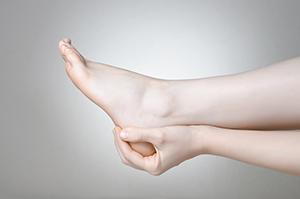Find out if your foot problems could be a sign of heel spur syndrome.
Are you experiencing heel pain that just won’t quit? Is it interfering with your daily activities or your physical activity? If your foot is giving you problems then it’s a surefire sign that you need to see your Philadelphia podiatrists at The Foot and Ankle Group for a proper diagnosis.
you problems then it’s a surefire sign that you need to see your Philadelphia podiatrists at The Foot and Ankle Group for a proper diagnosis.
What is heel spur syndrome?
A heel spur is simply a calcium deposit that forms under the heel bone. This deposit causes a hard, boney protrusion to extend out from the heel.
What causes heel spur syndrome?
A heel spur develops when a calcium deposit begins to grow on the heel bone. This usually occurs over several months. Strained foot muscles and ligaments, chronic tearing of the lining that covers the heel bone and stretching the plantar fascia can all cause heel spur syndrome. Athletes are particularly predisposed to developing this condition.
What are the signs and symptoms?
Although heel spurs can develop without experiencing any symptoms they are well known for causing chronic heel pain that is most often felt during physical activity. There may also be inflammation where the spur has developed. Some patients might characterize heel spur pain as a pricking sensation that is particularly painful in the morning but still causes minor aching throughout the day.
How is heel spur syndrome diagnosed and treated by my Philadelphia podiatrist?
If you have been dealing with heel pain for over a month then it’s time to see your Philadelphia podiatrists at The Foot and Ankle Group for treatment. X-rays are usually performed in order to see whether a heel spur has actually formed on the bone of your foot. Once we have determined that your pain is due to a heel spur we may recommend any of these conservative treatment options:
- Stretching and strengthening exercises (we would be happy to show you some exercises you can perform comfortably at home)
- Custom-made orthotics
- Physical therapy
- Tapping the foot to reduce stress placed on certain muscles
- Opting for shoes that offer more cushioning and support for your heel
- Over-the-counter pain relievers like Tylenol or Aleve
If your pain still doesn’t ease up after incorporating these measures into your lifestyle then your Philadelphia podiatrist may recommend steroid injections to help alleviate inflammation and pain. As many as 90 percent of patients who have heel spur syndrome do not require surgery; however, if these other treatments do not work and you continue to experience pain for almost a year, we may recommend plantar fascia release surgery, as well as removal of the heel spur.
Pain is your body’s way of letting you know that something isn’t right. Listen to your feet by scheduling an appointment with your Philadelphia podiatrists. We offer a variety of podiatric treatments at The Foot & Ankle Group to treat all of your needs. Let us combat your heel spur syndrome symptoms.

